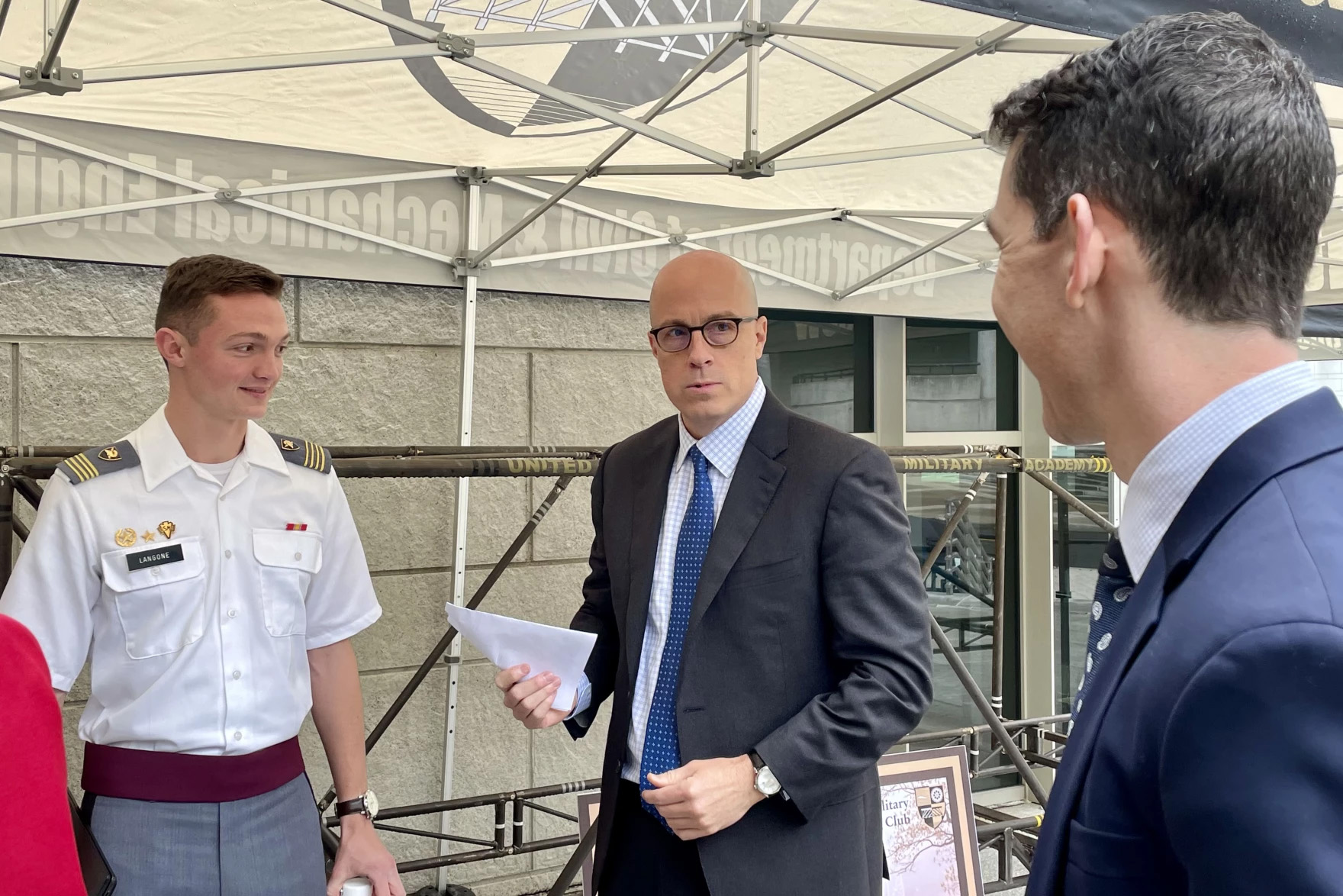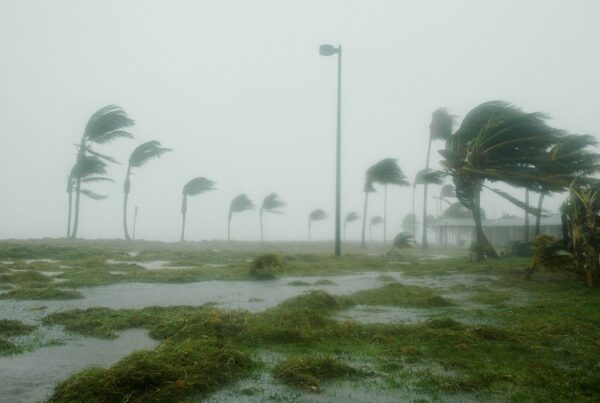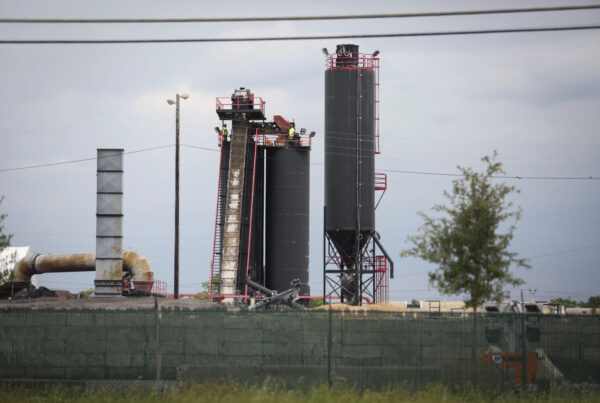From the American Homefront Project:
In an auditorium adorned with West Point’s motto — “Duty, Honor, Country” — seniors at the military academy recently presented their capstone projects. One group’s presentation focused on the possibility of transitioning the Army’s tactical vehicles to a fully electric fleet, and modeling what the charging infrastructure would look like on the bases.
Gregory Langone, an engineering major, is one of the cadets who worked on the project. After his presentation, he said the work he’s done as a student will have a direct impact on the work he’ll do when he becomes an officer.
“We’re going to be seeing this technology roll out, and we’re going to be some of the first people to actually see it in action and use it,” Langone said.
That’s because professors and fellow cadets weren’t the only people who saw the presentation by Langone and his classmates. Also present was Paul Farnan, the Army’s Principal Deputy Assistant Secretary for Installations, Energy and Environment, which oversees energy use on Army installations. Farnan said the cadets’ work on charging infrastructure directly affects him as he works to get bases ready for more electric vehicles.
“What they’re developing here, I want to turn around tomorrow and actually get it onto the installations so that we can make it a more effective Army,” Farnan said.
His office has teamed up with West Point to form the Sustainable Infrastructure Resilience and Climate Consortium. It’s working to prepare the next generation of leaders for the climate change challenges they face now and into the future, and it’s trying to help the Defense Department solve climate challenges that could affect national security.
Farnan said the focus is on solutions.
“Let’s take the real world, big Army problems that our soldiers are facing every day in their training and on the battlefield, and let’s use this academic institution to apply the theory behind it,” Farnan said. “And then as they figure it out in theory, let’s then take it and put it into the hands of soldiers and let’s test it out in the real world.”
Those challenges include fuel efficiency and how to store backup power. Farnan said sustainability and resilience on Army bases haven’t received enough attention in the past, but the consortium is changing that.
“We’ve been working with these students throughout the course of the academic year,” Farnan said. “The ingenuity, the knowledge, the different perspective that they bring is incredible.”
Professors at West Point say the consortium’s work transcends political debates over climate change — and the partisan wrangling over what the military’s priorities should be.
“Sometimes these topics get watered down with politics and that’s unfortunate,” said Colonel Corey James, who runs the department of chemistry and life science. “Some would say, ‘Well, you’re trying to do things that would take away the Army’s and the military’s ability to fight and win the nation’s wars.’”
But James said the opposite is true. He said preparing for climate change is in line with the academy’s mission to educate and train cadets on how to win wars.
“Being more efficient will obviously help us with carbon emissions and those sorts of things,” James said. “But it will likely make us more survivable and resilient on the battlefield as well.”
Electrifying the Army’s tactical vehicles comes with significant challenges, but also has the potential for game-changing opportunities.
“Our vehicles are very, very loud, and they’re very hot, which means that an enemy can find them,” said F. Todd Davidson at West Point’s Center for Innovation and Engineering. “So when we speak about electrification of the battlefield… it also potentially comes with significant opportunity to make our vehicles silent and to make them nearly invisible.”
Davidson said cadets are studying not only how to electrify and charge military vehicles. They’re also researching how water — either too much or too little — will affect geopolitics, how extreme weather is impacting bases, and how artificial intelligence can play a role in energy efficiency.
Langone, the West Point senior, said he’s proud to know his project on electric vehicles could have a real-world use for the Army.
“[We’re] a group of five seniors in college, but we’re working for the Office of the Assistant Secretary of the Army and the findings that we come up with through this project can drastically affect how the Army is acquiring electric vehicles, both domestically in the United States, and in our installations,” Langone said.
He said when he becomes an officer, he plans to continue studying the feasibility of the charging infrastructure models he developed as a student. He said that if the technology can work on Army bases, civilians could benefit off base as well.
This story was produced by the American Homefront Project, a public media collaboration that reports on American military life and veterans.















